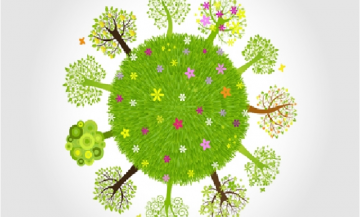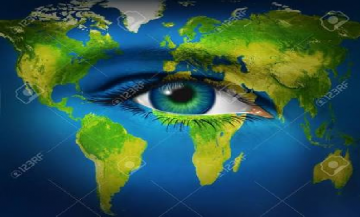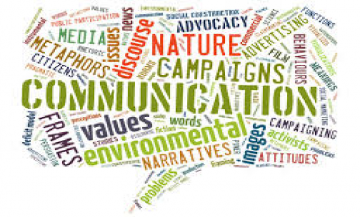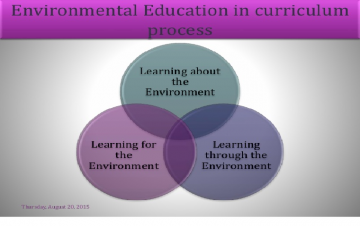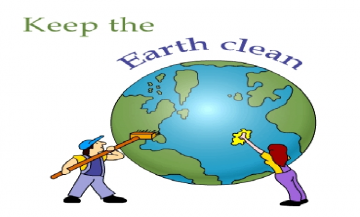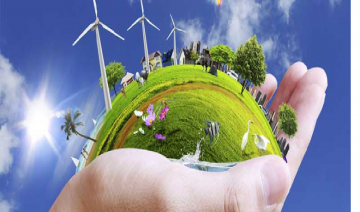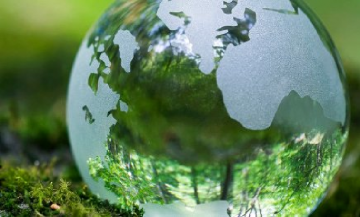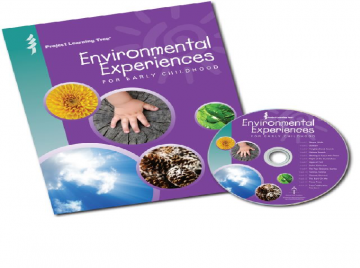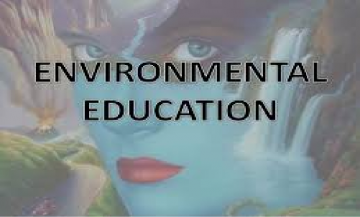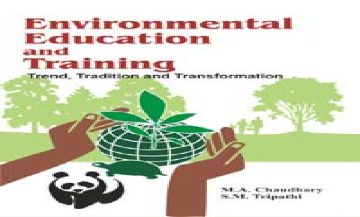News
APPROACH TO TEACHING ENVIRONMENTAL EDUCATION IN SCHOOLS
Environmental Goal
The goal of environment action is:
To improve all ecological relationships, including the relationship of humanity with nature and people with each other.
There are, thus, two preliminary objectives:
For each nation, according to its culture, to clarify for itself the meaning of such basic concepts as "quality of life" and "human happiness" in the context of the total environment, with an extension of the clarification and appreciation to other cultures, beyond one’s own national boundaries.p style="text-align: justify;"> To identify which actions will ensure the preservation and improvement of humanity's potentials and develop social and individual
ENVIRONMENTAL COMMUNICATION BEYOND MEDIA
Environmental communication and awareness rising is also taking place through citizen volunteers, through the efforts of the corporate sector, and through law and faith-based approaches. Each of these approaches has wide ranging applications across the region.
Citizen Volunteersp style="text-align: justify;">Mobilizing volunteer action is a time-tested tradition in environmental management and activism. Volunteers may be drawn from different sections of society; some will bring in specialized skills and knowledge; others will provide a donation of labour and time.
For example, in 1987 the Regional Environmental Management Offices in the Republic of Korea launched the Environmental Watchdog System to raise
ENVIRONMENTAL COMMUNICATION
Environmental communication has now emerged as strong complementary practice to environmental education. A broad definition of environmental communication would be, “the sharing of information, insights and opinions on environmental issues, trends, conditions and solutions using any means of communications, ranging from inter-personal methods to means of mass communication using the modern as well as traditional media”. In this sense, environmental educators constantly engage in environmental communication. However, an important distinction is that, while all environmental educators are communicators, not all environmental communicators are necessarily educators. Across the Indian Region, individuals and institutions engage in a very wide range of environmental
Environmental Education in school Curriculum an overall perspective
STATUS OF ENVIRONMENTAL EDUCATION IN SCHOOL EDUCATION
The education system in India had incorporated certain aspects of environment in school curricula as early as 1930. The Kothari commission (1964-66) also suggested that basic education had to offer EE and relate it to the life needs and aspirations of the people and the nation. At the primary stage, the report recommended that " the aims of teaching science in the primary schools should be to develop proper understanding of the main facts, concepts, principles and processes in physical and biological environment” Environmental education at primary, secondary, higher secondary levels was treated
ENVIRONMENTAL INFORMATION AND AWARENESS
Monitoring Assessment and Reporting
Environmental monitoring by government agencies and institutions in many countries has focused on certain environmental concerns, such as the quality of air, water and other natural resources. Monitored data are transformed into information that show environmental trends and effectiveness of past mitigation measure which are vital for environmental management. This information is also utilized in the state of environment reports; for example, of Australia; New Zealand; Malaysia; India; Fiji; Japan; Hong Kong, China; Turkmenistan; Azerbaijan; Uzbekistan; and Palau. NGOs and community-based organizations also play a significant role in collecting and disseminating information to the community and
ENVIRONMENTAL TRAINING
Environmental training is one of the most important means to develop human resources and facilitate the transition to a more sustainable world. “It should have a job-specific focus, aimed at filling gaps in knowledge and skill, and would help individuals find employment and be involved in environmental and developmental work. At the same time, training programmes should promote a greater awareness of the environment and development issues as a two-way learning process”.
Types of Training
Teachers in Formal Education
In a large number of countries in the region, teacher-training programmes at both pre-service and in-service levels have incorporated elements of
Formal Environmental Education
Environmental education is increasingly a prominent part of primary, secondary and tertiary education in Asia and the Pacific. The formal education sector plays a vital role in environmental education and awareness by exposing the younger generation to the information, issues, analyses and interpretations on environment and development.
A number of factors have influenced the development of environmental education in the region. The two over-arching factors are national education policy and national environment and population policy. These policies are a reflection of national cultural values, priorities and socio-economic goals in most countries. The national environmental education policy is usually the result
IMPORTANCE OF TEACHING ENVIRONMENTAL EDUCATION AT AN EARLY AGE
Early childhood learning and, in particular, on why it is important to educate young children about the natural environment and about how to relate to it in a way that would preserve its integrity in the interests of both present and future generations.
Although educational psychologists hold differing views on how young children learn, it is generally agreed that early childhood is the ideal time for learning not least because young children have fresh, uncluttered minds as well as strong natural curiosity to learn. Discussion begins with a consideration of the three classic approaches to child learning— the empiricist, nativist
METHODS OF SUCCESSFUL LEARNING IN ENVIRONMENTAL EDUCATION
Preparing students for their future life requires active classrooms and successful learning. Students spend nearly one third of their lives in schools, shaping their personalities, which are very difficult to change in their later lives. Their integration in society later depends very much on their personal qualities and competences, which to a great extend are products of well-organized and well accomplished education involving a cozy atmosphere of mutual understanding, collaborative inquiry learning and experience in all school subjects. Trying to implement this idea we came across several problems: In what ways in a swiftly changing world should the educational process
NON-FORMAL ENVIRONMENTAL EDUCATIONAL
Activities exist alongside the formal educational systems, at curricular and extracurricular levels, in occupational training, and through wide public awareness activities through non-formal channels such as mass media, and voluntary organizations. Different communities, institutions and individuals choose methods and practices that best suit their local needs and capacities.
Learning by Doing
In several countries, there are efforts to get students to relate to local problems, while understanding their global implications. In Bangladesh, an environmental education programme called Muktangan Siksha, or open-air education, encourages field programmes related to the surroundings and communities. In Myanmar, an imaginative pre-school and lower primary environmental

